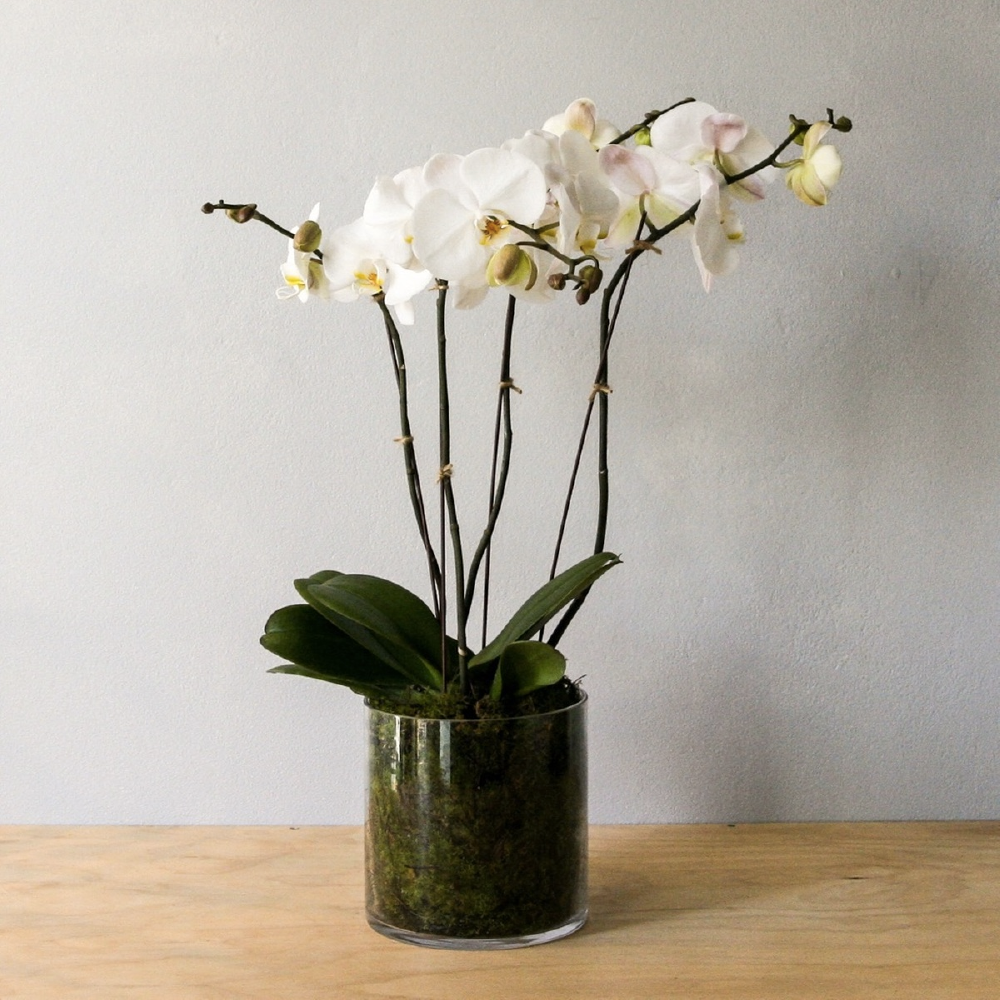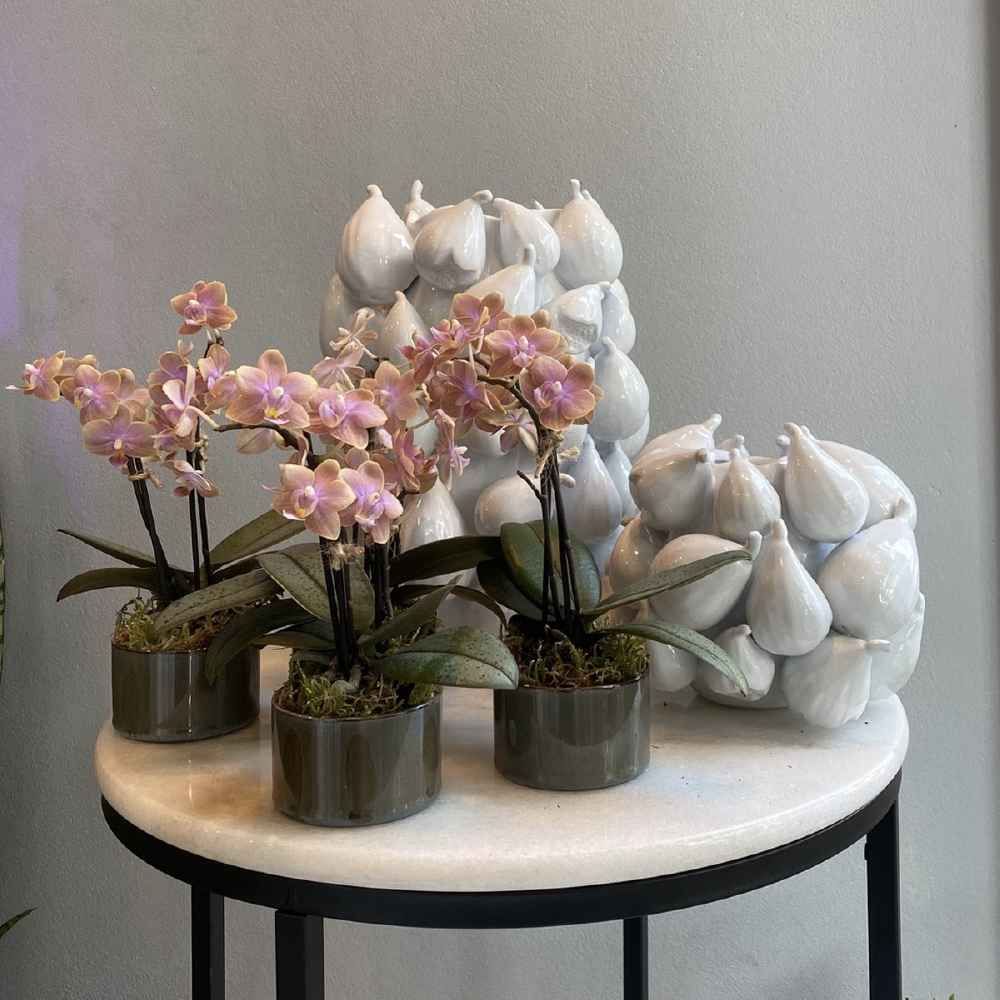
Our Redfern studio is evidence of how deep our love of orchids runs. With their beautifully symmetrical shape and a vast range of colours, these elegant plants are certainly one of our personal favourites. Still, we’re not alone – orchids have captivated people around the world for centuries!
History of Orchids
The orchid is part of the largest flowering plant family on earth, with over 25,000-30,000 species worldwide and about 120,000 hybrids. Fun fact: the most miniature orchid was initially mistaken for a fungus and is only half a millimetre!
However, the exact age of the flower family has been the subject of a longstanding debate. In 2005, researchers recovered fossilised orchid pollen on an extinct bee preserved in amber was recovered in the Dominican Republic. It was the first evidence that these delicate flowers existed around the time of the dinosaurs! Some say that orchids were around from the Jurassic period to the Mesozoic era (195–136 million years ago) and the Cenozoic period (64 million years ago).

Phalaenopsis Orchids:
Most people are introduced to the magical world of orchids through the Phalaenopsis – one of the prettiest species, in our humble opinion. Also known as the Moth orchid (a name derived from the shape of its flowers that resembles fluttering moths), these plants are native to Northern Australia, Southeast Asia to the Philippines and New Guinea. They come in various colours, from classic white to soft yellow to light pink and rich burgundy. There are also patterned varieties, which produce petals that feature pretty spots or stripes.
It’s a common misconception that orchids are very fragile and difficult to grow. Whereas the opposite is true. The Phalaenopsis orchid is an excellent option for beginners. By following a few simple light, temperature and humidity requirements, even the black thumbs among us will be able to keep these beauties alive and well and enjoy watching them bloom throughout the year.
Phalaenopsis (Moth) Orchid Care Tips:The roots are very susceptible to rot, therefore ensure that you don’t allow their roots sit in water. Leave the roots to almost dry out before you water them again.
- This species of orchid prefers diffused lighting conditions. Orchids are epiphytes and grow attached to large tree trunks in nature, which means they like bright, but indirect light seeping through the canopy. So, avoid bright, direct summer sun to avoid burning them. And as with any plant, rotate it every so often to ensure even growth.
- Phalaenopsis orchids only need watering weekly, and you can reduce watering in winter. More orchids die from overwatering rather than underwatering, so let the plant guide your schedule. Check the soil to ensure the top inch is kept moist, and you can also check the weight by picking it up to know whether or not the pot is dry and needs watering.
- The roots are very susceptible to rot, therefore ensure that you don’t allow their roots sit in water. Leave the roots to almost dry out before you water them again.
- Phalaenopsis is a monopodial orchid, a fancy way to say that they grow from a single stem / they have one root system. As such, they’re not a very drought-tolerant plant.
- Phalaenopsis orchids are indoor plants and can live in very humid conditions in nature. They thrive warm temperatures somewhere in the 17°C to 29°C range, so if you like to keep your home warm and toasty, then you might be the perfect orchid plant parent!

You don’t need a lot of skill to grow orchids in your home, and they’re always such a beautiful, sophisticated addition to any space with their long, delicate stems and dark green leaves. It probably comes as no surprise that the Phalaenopsis orchid symbolises elegance, femininity and attachment, and we promise that from the moment you bring the first orchid home that you’ll be well and truly hooked and want more.
